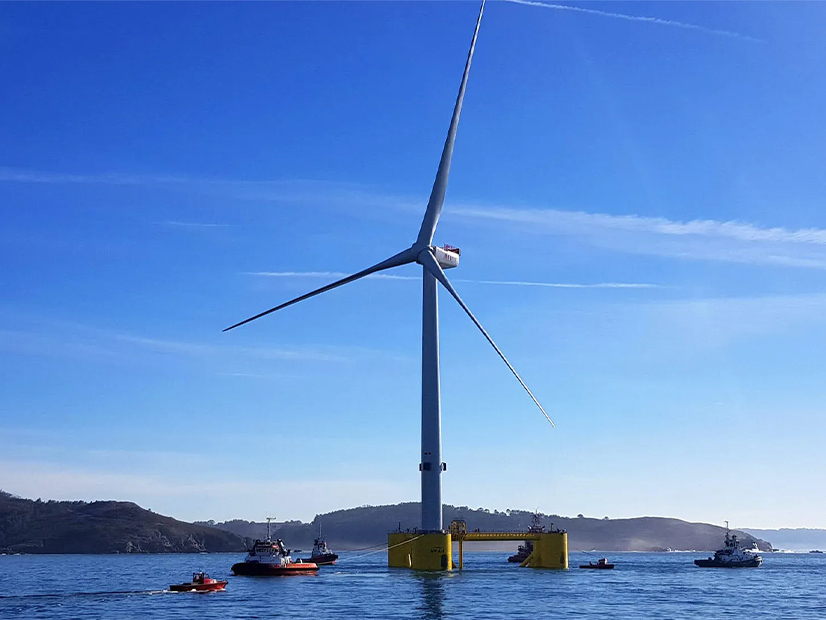
The California Coastal Commission took an important step last week to allow the West Coast’s first offshore wind lease auctions to proceed later this year, voting to back the federal Bureau of Ocean Energy Management’s assessment that lease activities off the coast of Central California are consistent with state and federal laws.
“I’m so excited we’ve finished this phase and will be moving forward,” commission Chair Donne Brownsey said after the unanimous vote Wednesday.
The commission had already approved leasing activities in April for the Humboldt Wind Energy Area (WEA) in Northern California. The latest vote concerned the Morro Bay Wind Energy Area — near the village of Cambria — the second of two WEAs that BOEM plans to auction this fall. Together the areas could generate 4.6 GW, a significant contribution to the state’s effort to rely on 100% clean energy by 2045.
While the lease areas in the Morro Bay area are 20 miles offshore in federal waters, the Coastal Commission has broad authority to govern activities within 3 miles of the coast and generally within about 1,000 yards of the high-tide mark on land. Following the auction, BOEM’s issuance of leases allows successful bidders to conduct studies in their lease areas, including installing buoys with data collection equipment and geophysical, biological, archaeological and ocean-use surveys. BOEM expects lessees to make up to 873 vessel trips to complete their surveys and site assessments over a three-year period.
“Lease activities have the potential to adversely affect marine resources through seafloor habitat disturbance and increasing turbidity, elevated levels of underwater sound during surveys, increased risk of ship strikes due to increased vessel traffic and incrementally increased entanglement risk due to the placement of buoys,” the Coastal Commission said in a staff report.
BOEM issued a proposed sale notice for the WEAs last month. (See BOEM Issues Proposed Sale Notice for Calif. Offshore Wind Areas.)
The Morro Bay leases will cover about 241,000 acres of ocean in an area home to whales, dolphins, deep-sea corals and sponges, among other species.
The leases do not permit the installation of wind turbines or other infrastructure. Development of the areas will fall under future proceedings by BOEM and the Coastal Commission, requiring approval by both. When development does occur, it will likely include some of the largest floating wind turbines ever built, capable of generating 15 MW each.
“A 15-MW turbine would be expected to have the following approximate dimensions: a hub height of 486 feet, a rotor diameter of 807 feet and a maximum height at the blade tip of 889 feet,” the staff report said. “If turbines of this size were installed in the Morro Bay WEA, they would likely have a distance between turbines of 0.917 to 1.22 miles.”
Mooring cables, undersea transmission lines and onshore port facilities would be part of the development plans.
“Approximately every 10 years, the entire system would need to be disconnected and towed to shore for repairs, followed by reinstallation,” the report said.
The Coastal Commission’s decision came with some conditions, including that the lessees’ surveys and site assessments minimize impacts to coastal resources, comply with marine wildlife protection measures and avoid contact with rocky outcroppings, seamounts, or deep-sea coral and sponge habitat. Another condition restricts vessel speeds to 10 knots, including during travel from harbors to the survey sites.
Public commenters at the hearing — which was surprisingly uncontentious, several of them noted — tended to support commission approval of the lease activities.
“Speaking on behalf of 45 companies, including offshore wind developers and technology firms, we are unified in our support of the Coastal Commission’s staff report and its conditions for federal leasing activities in the Morro Bay Wind Energy Area,” said Adam Stern, executive director of trade group Offshore Wind California. “Your endorsement of the staff report — similar to your unanimous action on the Humboldt Wind Energy Area in April — would reaffirm the commission’s historic commitment to protect California’s coastal resources and heritage, while also advancing the state’s clean energy and climate goals.”
The California Energy Commission is currently re-evaluating its goals for offshore wind development — 3 GW by 2030, and 10 to 15 GW by 2045 — after critics said they were too modest given the state’s clean energy needs and should be as high as 18 to 50 GW by 2045. (See CEC Postpones Vote on Offshore Wind Goals.)
